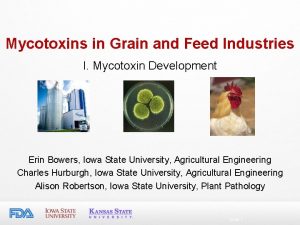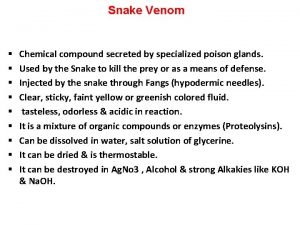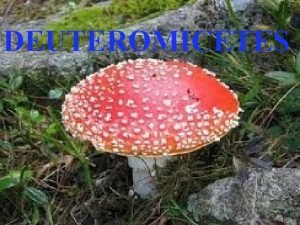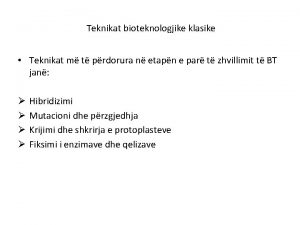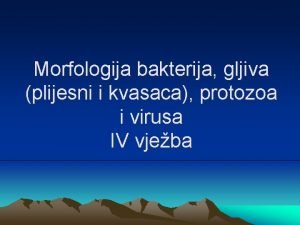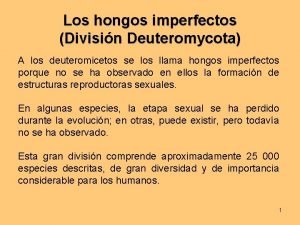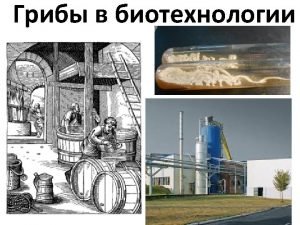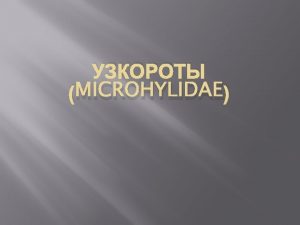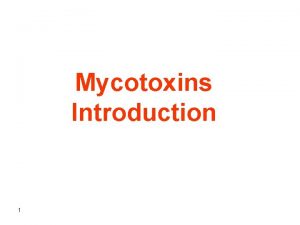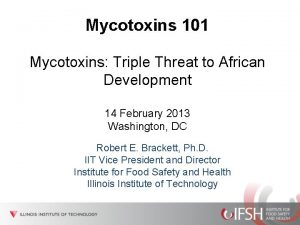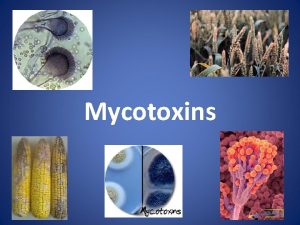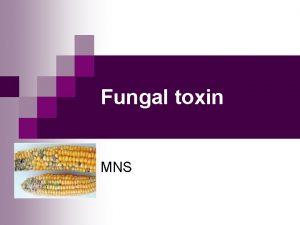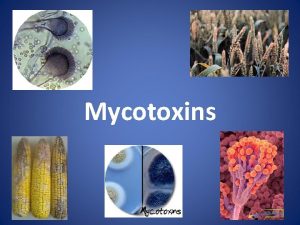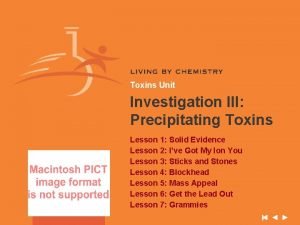Mycotoxins Penicillium Toxins Large genus with over 150











- Slides: 11

Mycotoxins

Penicillium Toxins • Large genus with over 150 species. • Discovered antibacterial properties within genus, causing production of penicillin. • 100 species have mycotoxins. • Nine specific toxins affecting human health are citreoviridin, citrinin, cyclopiazonic acid, ochratoxin A, patulin, penitrem A, PR toxin, Roquefortine C, and, Secalonic acid D.

Penicillium Toxins (Cont. ) • Separated into two groups: 1. those that affect liver and kidneys, 2. those that are neurotoxic. • Liver and kidney toxins are asymptomatic and cause overall animal debility ﺿﻌﻒ. • Neurotoxins cause visible trembling ﺭﻋﺸﺔ.

Ochratoxins Ø Fungal producer: Produced by species of Aspergillus such as A. ochraceus Ø Most important is Penicillium verrucosum which occurs on grains Ø Natural occurance: beans, peanuts, wheat, rice, dried fruit and dried fish.

Ochratoxins Toxicity: Ø Ochratoxin A a nephrotoxin responsible for nephropathy in pigs and humans Ø It is immunosuppressive and also assumed to be carcinogenic. Ø OTB is non toxic

Impact on human and animal health • Ochratoxin A is potentially carcinogenic to humans • OTA is nephrotoxic and is suspected of being the main etiological ﻭﺑﺎﺋﻰ agent responsible for human Balkan nephropathy (BEN) and associated urinary tract tumors.

Citrinin Ø Producing fungi: P. citrinium, P. chrysogenum, A. terreus and A. candidus Ø Natural occurrence: wheat, rice, maize, oats, peanuts, meat products and fruits Ø Toxicity: • Cause kidney damage • Cause the fetal human kidney disease

Ochratoxin A and Citrinin Affects kidney function (nephrotoxin). ► Causes Balkan nephropathy and Yellow Rice Fever in humans. ►Chickens, turkeys, and ducklings are affected by ochratoxicosis, causing poor weight gain, egg output, and poor shell quality. ► Mostly associated with horses, pigs, dogs, and poultry. ► Ocratxin A Citrinin

Patulin • Producing fungi: A. clavatus, A. terreus and penicillium roqueforti • Natural occurrence: fruits like apples, pears and grapes. • Uses: Patulin was originally used as an antibiotic against gram-positive and gramnegative bacteria. • Treat common cold.

Patulin Toxicity: Ø Major acute toxicity findings include gastrointestinal problems, neurotoxicity (i. e. , convulsions ﺗﺸﻨﺠﺎﺕ ), pulmonary congestion ﺍﺣﺘﻘﺎﻥ ﺍﻟﺮﺋﺔ , and edema. Ø Patulin was found to be immunotoxic in a number of animal and even human.

Cyclopiazonic Acid (CPA) • Producing fungi: Penicillium cyclopium, Aspergillus flavus, and A. versicolor • Found in corn and peanuts. • Chief species from Penicillium causes cheese spoilage ﺗﻠﻒ. • Causes fatty degeneration in liver and kidneys in animals • chickens are very susceptible. • May act synergistically with aflatoxin. CPA
